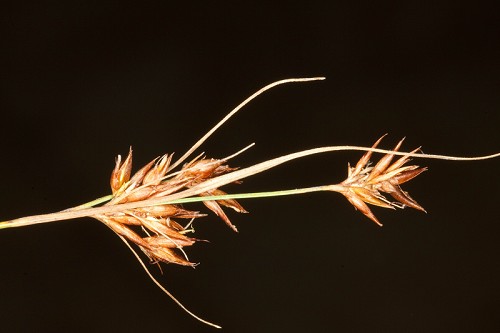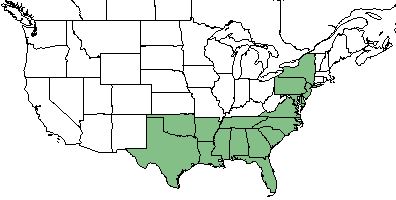Difference between revisions of "Rhynchospora gracilenta"
(→Ecology) |
|||
| Line 38: | Line 38: | ||
<!--===Seed bank and germination===--> | <!--===Seed bank and germination===--> | ||
<!--===Fire ecology===--> <!--Fire tolerance, fire dependence, adaptive fire responses--> | <!--===Fire ecology===--> <!--Fire tolerance, fire dependence, adaptive fire responses--> | ||
| − | <!--===Pollination | + | <!--===Pollination and use by animals===--> |
| − | |||
<!--==Diseases and parasites==--> | <!--==Diseases and parasites==--> | ||
Revision as of 19:49, 23 June 2021
Common name: slender beaksedge[1]
| Rhynchospora gracilenta | |
|---|---|

| |
| Photo by John Gwaltney hosted at Southeastern Flora.com | |
| Scientific classification | |
| Kingdom: | Plantae |
| Division: | Magnoliophyta - Flowering plants |
| Class: | Liliopsida - Moncots |
| Order: | Poales |
| Family: | Cyperaceae |
| Genus: | Rhynchospora |
| Species: | R. gracilenta |
| Binomial name | |
| Rhynchospora gracilenta A. Gray | |

| |
| Natural range of Rhynchospora gracilenta from USDA NRCS Plants Database. | |
Contents
Taxonomic Notes
Synonyms: Rynchospora gracilenta, orthographic variant
Varieties: none
Description
R. gracilenta is a perennial graminoid of the Cyperaceae family native to North America.[2]
Distribution
R. gracilenta is found along the southeastern coast of the United States from Texas to New York.[2]
Ecology
Habitat
R. gracilenta proliferates in savannas and bogs.[1] Specimens have been collected from shaded borders of a creek, wet soil of hammock, roadside seepage, canopy at headwaters of a creek, marshy shores of lake, swampy areas, sandy peat of savanna bog in pineland, wetland longleaf pine savanna, pine flatwoods, and near margin of gum-pond.[3]
Phenology
R. gracilenta has been observed flowering in January, March, and May through November with peak inflorescence in July.[4]
Conservation, cultivation, and restoration
R. gracilenta is listed as extirpated by the Pennsylvania Department of Conservation and Natural Resources.[2]
Cultural use
Photo Gallery
References and notes
- ↑ 1.0 1.1 Weakley, A. S. (2015). Flora of the Southern and Mid-Atlantic States. Chapel Hill, NC, University of North Carolina Herbarium.
- ↑ 2.0 2.1 2.2 USDA Plant Database https://plants.usda.gov/core/profile?symbol=RHGR
- ↑ URL: http://herbarium.bio.fsu.edu. Last accessed: June 2018. Collectors: Loran C. Anderson, Bruce Hansen, JoAnn Hansen, R.K. Godfrey, R. Kral, Steve Orzell, Edwin Bridges, Sidney McDaniel, A. H. Curtiss, Andre Clewell, J.N. Triplett, Travis MacClendon, Karen MacClendon, Angus Gholson, Wilson Baker, Chris Buddenhagen, Austin Mast, Marybeth Webster, Becky Bee, Richard Carter, John Nelson, Wade Biltoft, Ben Grahm. States and counties: Florida (Okaloosa, Walton, Santa Rosa, Martin, Bay, Franklin, Liberty, Gulf, Wakulla, Duval, Calhoun, Leon, Washington, Gadsden) South Carolina (Colleton) North Carolina (Bladen) Georgia (Thomas, Grady)
- ↑ Nelson, G. PanFlora: Plant data for the eastern United States with emphasis on the Southeastern Coastal Plains, Florida, and the Florida Panhandle. www.gilnelson.com/PanFlora/ Accessed: 29 MAY 2018